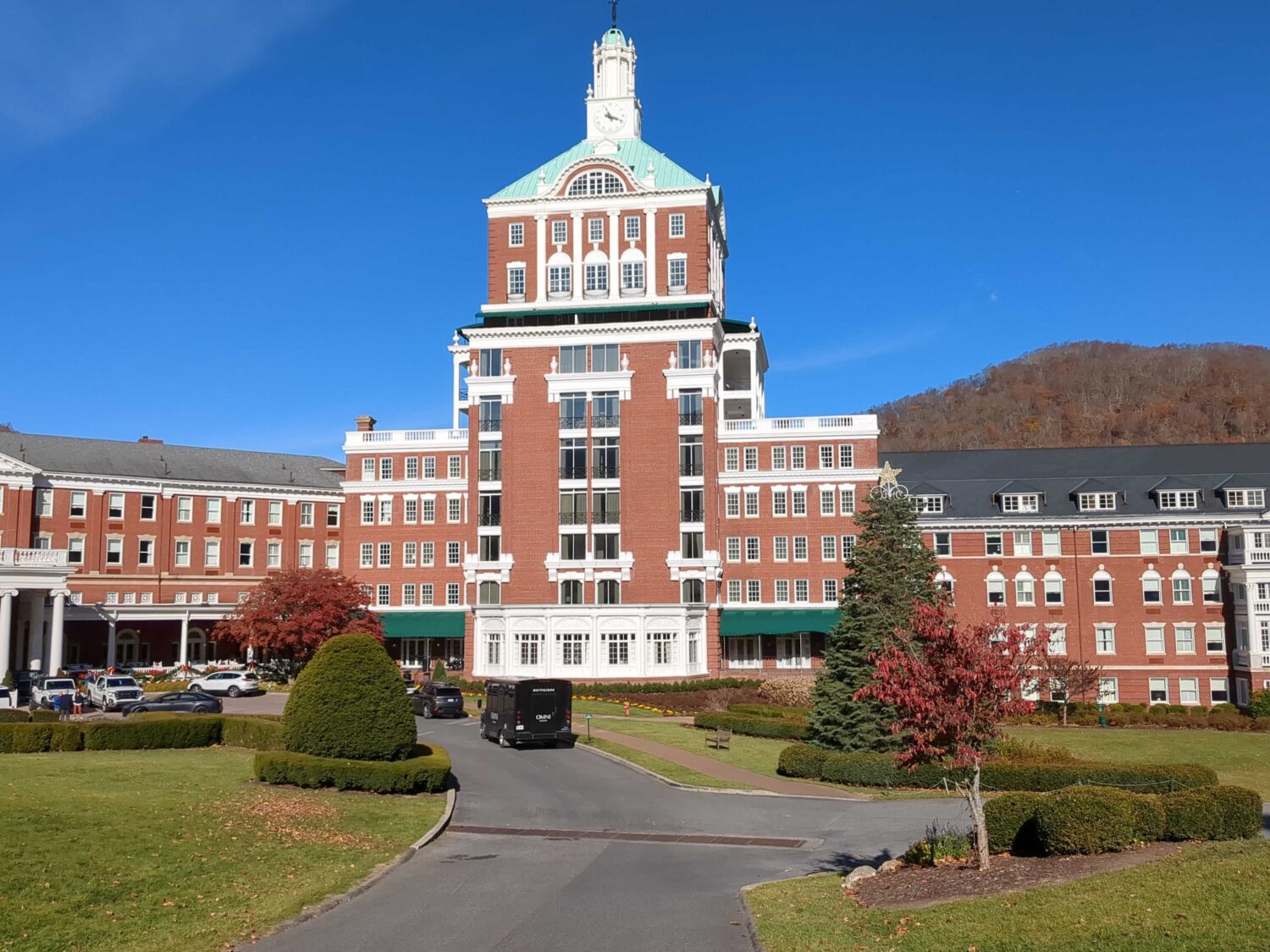|
|
|
HAPPY FRIDAY
November 15, 2024
|
|
|
|
Welcome to Energy Right’s weekly roundup! This week our team criss crossed the Commonwealth on our mission for
Clean Energy the Right Way.
|
|
|
|
|
|
Insights from VACO: Solar Solutions for Balancing Growth and Preservation
|
 |
|
Bath County, Virginia
|
|
The Energy Right team gathered in Bath County this week for the annual Virginia Association of Counties Conference with local leaders from all corners of the commonwealth. Spanning three days, we were thrilled by the conversations that took place, and the interest attendees had in our work in clean energy education. We even had time to participate in VACo’s Golf tournament and score some prizes! Below are a few of our takeaways from the conference:
-
Energy planning is at the front of mind for a great deal of county officials. Folks understand the incredible need for new energy generation to meet our growing needs. Leaders also understand the controversy that energy projects can create when questions and misunderstandings are present during land use decisions.
-
Concerns about solar remain focused around viewshed, existing land use, and property rights.
-
Kicking the can down the road and waiting for Small Modular Nuclear Reactors (SMRs) to be proposed, permitted, and built, is not an actual solution. If your air condition gives out in June, you don’t place an order for a new system that’s ready for delivery in 2034.
-
Local control on land use decisions is a near unanimous preference. The key exists in finding the balance between localities who have approached solar siting with an open mind and those who have refused solar projects from the beginning.
-
Virginia has but so much capacity to import power from our neighboring states. Unless large transmission lines are constructed to bring in more power from other states (who will benefit from the economic growth of energy development), Virginia’s economic growth will be limited by the energy we are able to provide our homes and businesses.
As we look to 2025, Virginia’s local leaders have a crucial opportunity to champion thoughtful solar development. By facilitating projects that balance progress with preservation, we can attract investment, create jobs, and enhance tax revenues—all while upholding the values and traditions that make Virginia special. Embracing this approach ensures a prosperous, sustainable future for all Virginians.
|
|
|
|
|
|
|
|
|
|
|
|
Virginian Alliances Bring a Better Change
|
|
|
|
|
The South Central Virginia Business Alliance (SCVBA) hosted their annual Membership and Networking event in Halifax county with local businesses, national EPC’s, and representatives from the solar industry. SCVBA wants to highlight how local businesses can help make solar projects the best possible partners in a community by ensuring the capital spent on a solar project stays local. From construction services, food and lodging services, to information technology services so many businesses stand to gain from a solar project coming to town.
In addition to networking among local businesses, SCVBA members and attendees also got to hear from a great panel of experts that included university representatives, national EPC’s, solar developers, and local government officials. This panel will assess the rapidly growing demand for construction services within the renewable energy sector. Experts discussed the latest trends, challenges, and opportunities in building renewable energy infrastructure. They also explored the impact of the market demand for renewable energy, government policies, technological advancements, and other market forces on the construction industry’s role in shaping a sustainable future.
|
|
|
 |
|
Halifax, Virginia
|
|
|
|
|
|
|
|
|
|
This week, our team travelled to:
Bath, Halifax, Rockbridge, and Russell counties.
|
|
|
|
|
|
|
 |
|
Halifax County, Virginia
|
|
|
|
The Energy Right team attended a ribbon cutting ceremony for Crystal Hill Solar in Halifax County. It was great to see such a high-quality project with great screening, established vegetation, and supportive neighbors. This project has also incorporated agrovaltaics into the project with sheep grazing and pollinators. Crystal Hill Solar is a perfect example of how solar works in partnership with the community.
|
|
|
|
|
|
|
|
New database reveals extent of solar push in Southside
|
|
A new solar database from UVA’s Weldon Cooper Center sheds light on the state of solar development in Virginia, revealing key trends and challenges. While Southside Virginia leads with nearly half of the state’s locally approved solar capacity (6,000 MW), the approval rate for new projects has dropped sharply—from over 80% in 2017 to under 50% in 2023. This decline highlights growing tensions between local governments and state mandates for renewable energy development under the Virginia Clean Economy Act.
We see this as a crucial moment for collaboration. The database underscores the need for transparent, standardized processes to guide solar siting while addressing community concerns about aesthetics, land use, and environmental impact. Balancing state and local interests is vital to meeting energy demands, supporting rural economies, and maintaining momentum toward Virginia’s clean energy future.
|
|
|
|
|
|
|
|
|
|
NEXT WEEK
We’ll be going to Halifax and Surry counties.
Have a great weekend!
|
|
|
|
|
|
|
|
|
|
“The landmark law Virginia passed in 2020 to decarbonize the electric grid is being tested, as energy demand from data centers surges, prompting discussions about how to meet the law’s goal.
On Monday, Nov. 18, Sen. David Marsden, D-Fairfax, is hosting a summit in Richmond to talk about that law, the Virginia Clean Economy Act, and a wide range of related topics including economic considerations, challenges limiting local approvals for solar projects, energy efficiency, delivering energy through transmission lines and small modular nuclear reactors.”
|
|
|
|
|
|
|

